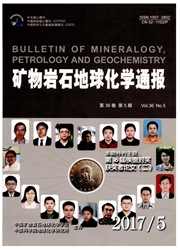

 中文摘要:
中文摘要:
二个沉积核心, KCES1 和 ODP797,从日本(JS ) 的海被恢复,为导出 alkenone 的海表面温度被测量(\(U ^{{\text { K }}^{\prime }}_{ 37 }{\text {-SSTs}}\)) 。我们的结果表明 SST 仔细在最后期间跟随冰川间冰期的周期 170 ? ka 除了在最后冰川的最大值(LGM ) ,在哪个期间 SST 比在 Holocene 高。当海水平几乎低于 130 时,在 LGM 的异常高温度被看作一个低咸度水团的侵入的效果进 JS ? m。在上对轨道的 timescale 冰川间冰期,\( U ^{{ \text { K }}^{ \prime }}_{ 37 }{ \text {-SSTs}}\)在 JS 的记录与 benthic 相关很好有孔虫目<啜class=“ a-plus-plus ”> 18 O 记录和太阳的曝晒,它在 JS 在 SST 上建议太阳的曝晒和它的相关的海冰发展的主导的控制。在 sub-orbital/millennial timescale 上,减少了 SST 在最后冰川的时期(MIS3 和 MIS4 ) 期间对应于提高的东方亚洲人冬季季风(EAWM ) ,在 JS 在 SST 上由于提高的 EAWM 显示海冰扩大的主导的控制。在最后间冰期的时期(MIS5 ) 期间,相反,在 JS 的 SST 被变化在东方亚洲人夏天季风控制。自从最后,这些结果在 JS 在 SST 的变化加亮太阳的曝晒和联系冰川间冰期的条件的关键角色 170 ? ka。
 英文摘要:
英文摘要:
Two sediment cores, KCES1 and ODP797, which were recovered from the Sea of Japan (JS), were measured for alkenone-derived sea surface temperatures (U37-SSTs). Our results revealed that the SSTs closely follow the glacial-interglacial cycles during the last 170 ka, except in the last glacial maximum (LGM), during which the SST was higher than in the Holocene. The anomalous high temperature in the LGM is considered as an effect of the intrusion of a low salinity water mass into the JS when the sea level was almost below 130 m. On the glacial- K interglacial to orbital timescale, the U37-SSTs record in the JS correlated well with the benthic foraminiferal SO record and solar insolation, which suggests the dominant control of solar insolation and its related sea ice develop- ment on the SST in the JS. On the sub-orbital/millennial timescale, reduced SST corresponds to an enhanced east asian winter monsoon (EAWM) during the last glacial period (MIS3 and MIS4), indicating the dominant control of sea ice expansion due to the enhanced EAWM on the SST in the JS. In contrast, during the last interglacial period (MIS5), the SST in the JS was controlled by variations in the east Asian summer monsoon. These results highlight the key role of solar insolation and associated glacial-interglacial conditions in the variations of the SST in the JS since the last 170 ka.
 同期刊论文项目
同期刊论文项目
 同项目期刊论文
同项目期刊论文
 Biomarker records of phytoplankton productivity and community structure changes in the Japan Sea ove
Biomarker records of phytoplankton productivity and community structure changes in the Japan Sea ove Paleoenvironmental changes in the East/Japan Sea during the last 48 ka: indications from high-resolu
Paleoenvironmental changes in the East/Japan Sea during the last 48 ka: indications from high-resolu Depositional environment in the southern Ulleung Basin, East Sea (Sea of Japan), during the last 48,
Depositional environment in the southern Ulleung Basin, East Sea (Sea of Japan), during the last 48, 期刊信息
期刊信息
